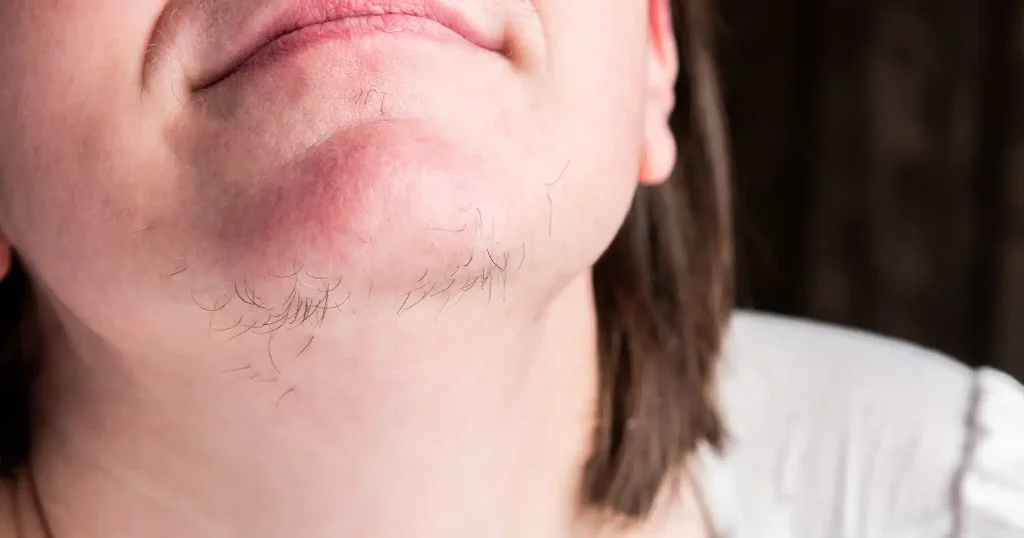In certain cases, women can develop hair in areas where men typically have substantial hair growth, such as the chin, chest, back, and upper lip. If you’re experiencing excessive facial or body hair in these areas, you might be dealing with a condition called Hirsutism.
Hirsutism in women is mainly caused by an excess of androgens, a type of male hormone that is naturally present in low levels in females. Elevated levels of androgens can trigger the unusual hair growth observed in Hirsutism.
But there’s no need to panic! Numerous self-care treatments and effective medical options are available for women with this condition. Keep reading to discover more about Hirsutism and how to manage it.
What Causes Hirsutism?
It’s important to note that genetics can play a role in the development of Hirsutism. If it runs in your family, you might be more susceptible. However, there are other factors besides genetics that contribute to excessive hair growth.
Here are additional causes of Hirsutism in women:
- Polycystic Ovary Syndrome (PCOS)
- Disorders of the pituitary, adrenal, or thyroid glands
- An ovarian tumor that increases androgen production
- Severe insulin resistance
- Hormonal changes post-menopause
- Usage of anabolic steroids or corticosteroids
- Medications for endometriosis
- Other specific drugs
Note: Sometimes, the cause remains unknown. In such cases, it is referred to as Idiopathic Hirsutism.
Symptoms of Hirsutism
When Hirsutism is caused by elevated androgen levels, other symptoms of virilization may develop over time. You might notice:
- Deepening voice
- Balding
- Acne
- Breast reduction
- Increased muscle mass
- Enlargement of the clitoris
Who is Susceptible to Hirsutism?
The following groups are more likely to experience Hirsutism:
- Individuals diagnosed with PCOS
- Family members with excessive hair growth
- People with disorders of the pituitary, adrenal, or thyroid glands
- Diabetics suffering from insulin resistance
- Women undergoing hormonal changes due to menopause
How Can Hirsutism be Treated?
Treatment varies according to personal preference. Each individual has a different comfort level regarding how much hair to remove or reduce.
Effective methods for managing unwanted hair in Hirsutism include:
Shaving: It should be done as the hair begins to grow back.
Depilatory lotion: This involves applying chemicals to the skin, making the hair soft enough to be wiped away.
Waxing: Both hot and cold wax can be used to remove hair from the root. This process should be repeated every two to three weeks.
Bleaching: Applying chemicals to lighten the hair makes it less visible.
Electrolysis: A fine, electrically-charged needle is injected into the hair follicle, damaging it and preventing future growth. Multiple sessions are required for lasting results.
Laser hair removal: The laser’s light targets the pigment in the hair, destroying it. Multiple sessions are necessary for effective results.
Skin creams: Topical creams containing eflornithine can slow hair growth, with results visible after 6 to 8 weeks.
With Pro Health Support, gaining control over Hirsutism is achievable through appropriate self-care and medication options. Explore these treatments to find the best approach for you.
